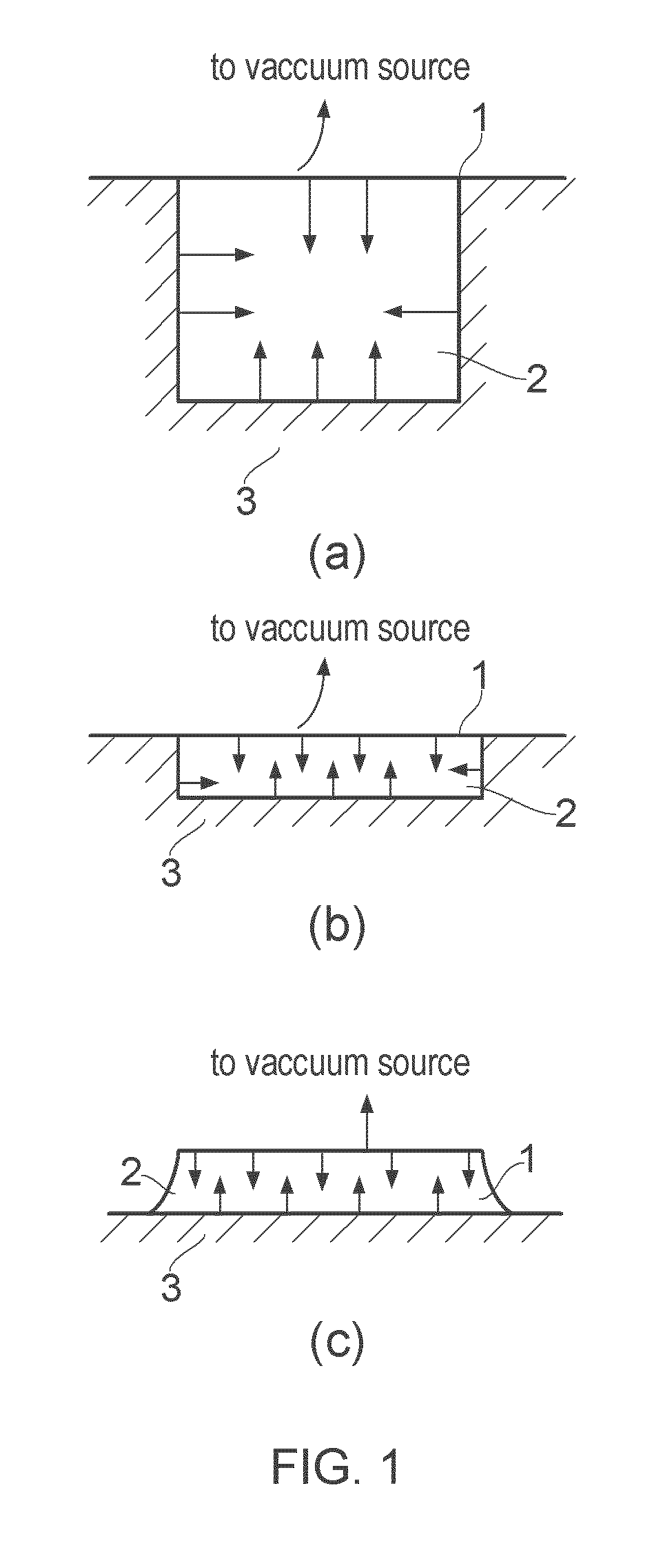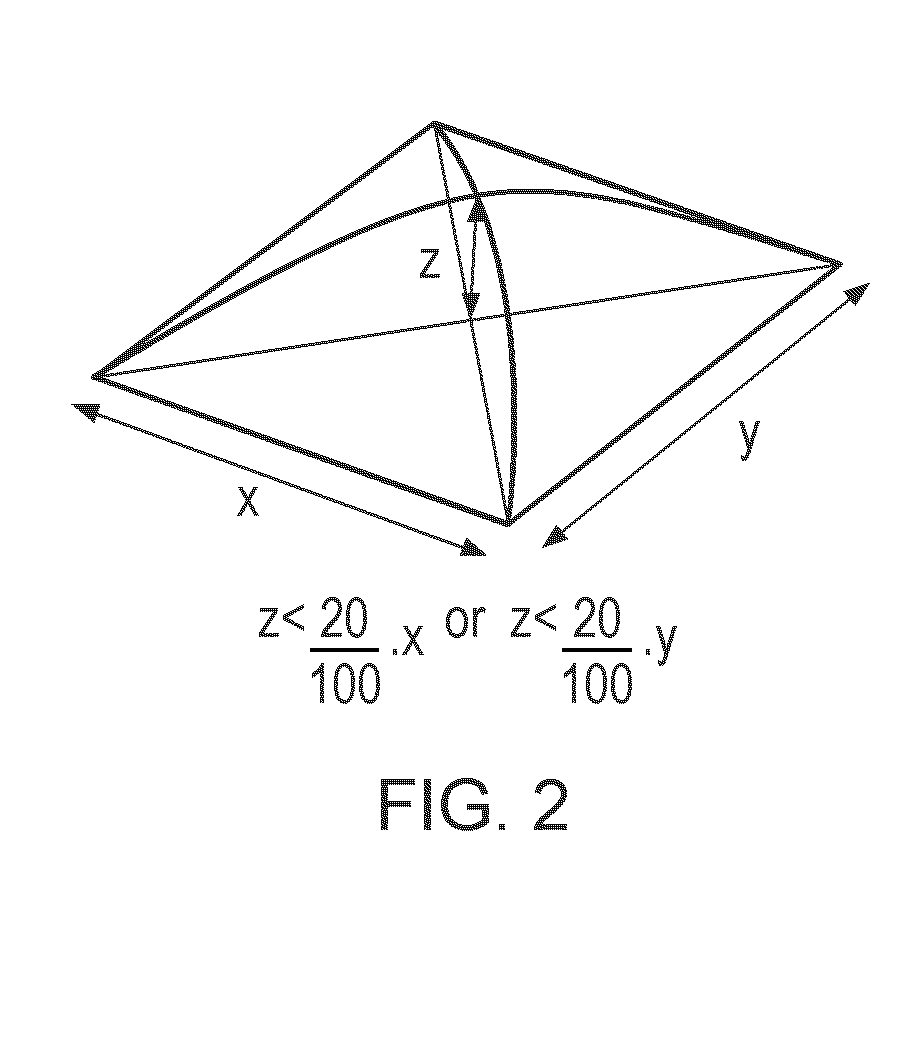Vacuum closure device
a technology of vacuum closure and closure device, which is applied in the direction of wound drain, suction drainage container, veterinary instruments, etc., can solve the problems of not being aware of topical negative pressure devices capable of generating significant forces and unaffordable mechanical forces
- Summary
- Abstract
- Description
- Claims
- Application Information
AI Technical Summary
Benefits of technology
Problems solved by technology
Method used
Image
Examples
example 1
Construction of the Incision Closure Device Pictured in FIG. 3c
[0079]A device of the design pictured in FIG. 6 was moulded using a transparent, heat-curable medical grade silicone elastomer. The device had a dome-profiled pressure cracking valve (Minivalve International B. V.) cast into one of it's cavity faces. The flat surfaces of the inverted ‘V’ section of the device was reinforced with pre-cured mechanically stiff silicone elastomer.
example 2
Incision Closure with the Device of Example 1
[0080]The device prepared in Example 1 was positioned over a gaping linear incision made into a porcine belly cadaver. Partial vacuum was applied to the device via the crack-valve port. A pressure of −100 mmHg was achieved relative to ambient atmospheric pressure (660 mmHg absolute pressure). The device deformed by hinging about the highest point of the inverted ‘V’ section, causing contraction of the tissue around the incision in a direction perpendicular to it, thus achieving closure of the wound.
example 3
Construction of Device for the Closure of Open Area Wounds in Langer's Line Neutral Locations
[0081]A design of the concept pictured in FIG. 7 was moulded using a heat-curable medical grade silicone elastomer. The mould used was a collapsible funnel (Normann, Copenhagen) in the collapsed position. When the elastomer was cured, the concentric finned device was removed by opening the funnel.
PUM
 Login to View More
Login to View More Abstract
Description
Claims
Application Information
 Login to View More
Login to View More - R&D
- Intellectual Property
- Life Sciences
- Materials
- Tech Scout
- Unparalleled Data Quality
- Higher Quality Content
- 60% Fewer Hallucinations
Browse by: Latest US Patents, China's latest patents, Technical Efficacy Thesaurus, Application Domain, Technology Topic, Popular Technical Reports.
© 2025 PatSnap. All rights reserved.Legal|Privacy policy|Modern Slavery Act Transparency Statement|Sitemap|About US| Contact US: help@patsnap.com



